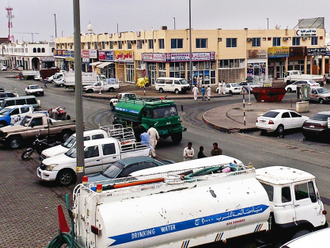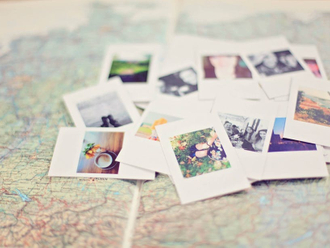
I am woken in the middle of the night by the silence. A world away from the all-night bustle that is the bus stop outside our London flat, I have been disturbed by the absence of noise. When I step on to the veranda, the night sky is crowded with stars, the Moon is a sliver and the hills that surround our cottage are lost in darkness.
They are back in the morning, edges blurred by early mist but stretching out as far as the eye can see. Karan, our houseman, says you can see the sea on a clear day but not today.
Wildflower Cottage sits in the middle of hundreds of acres of tea, a tiny remnant of Rule Britannia, surrounded by terraces of sturdy green bushes on the slopes of Sri Lanka's hill country.
The tragedies that have afflicted this teardrop-shaped island off India's southeast coast are well documented. Three decades of civil war have left deep scars on Sri Lanka and her people while the 2004 tsunami brought fresh wounds. It is little wonder that tourists have stayed away.
But following the end of the war a year ago, visitors are returning to Sri Lanka, perhaps unable to resist her wonderful array of beaches, jungle and culture. The figures tell the story: Visitor numbers were up 60 per cent (year on year) last February — and even The New York Times has picked Sri Lanka as its No 1 holiday destination for 2010.
Into the suburbs
Many will come for the beaches and surf culture of the west coast, flitting between the laid-back Hikkaduwa, charms of Bentota and newly spruced up Unawatuna and Mirissa down south. But after an overnight stop by the Indian Ocean, we ignored the draw of the sea and headed inland.
Early indications were not auspicious. Our trip had begun in Colombo, the least prepossessing in a long line of cities that have been Sri Lanka's capital. From the airport, the hour's drive south took us through indistinguishable suburbs, with an accompanying tinnitus of bus horns (low, persistent and bone-shaking) and revving trishaws (high, persistent and eardrum-shattering).
But on the ocean's edge, the Galle Face Hotel, still proffering a splendidly stiff upper lip, welcomed us in.
That evening we watched kite-fliers on Galle Face Green before repairing to the hotel's famous chequerboard terrace for a Hollywood sunset.
The following day, it took five hours to reach Haputale (5,000 feet above sea level), on the southern edge of the hill country. But it felt much longer.
Our minibus driver had taken the hairpins without feeling the need for brakes or, indeed, any element of the Highway Code.
Here, the rules have been simplified: Horn-blowing and overtaking on a blind corner are mandatory, trishaws and cyclists can be run off the road without a backward glance and red (state-run) buses stop for nothing, even if — in fact, especially if — they are careering towards you on the wrong side of the road.
We arrived at the narrow, stony track to Wildflower Cottage, feeling as though we had survived a prolonged ride on an Alton Towers rollercoaster — which served to make the magical scene unfolding before us even more wonderful.
Waiting on the steps, Karan, in white dhoti and jacket, smiled broadly and offered us cold towels to wipe the fear off our faces before we were led down a stone path, bordered by irises, snapdragons and impatiens, to Wildflower Cottage. It sits on the edge of the escarpment, 5,000 feet up, looking out at an unimpeded view of valleys, lakes and jungle.
The building is one of three green-roofed, time-capsule bungalows on the estate (the others are Rose Cottage and Aerie Cottage) but each lies in splendid isolation in its own grounds and is looked after by its houseman.
Old-school attraction
Inside, the living room has chintz, a fireplace and Reader's Digests from 1963. The only thing missing was a flagpole. Outside is The View. From our two terraces, we sit and watch the plantation come to life each morning as the women tea-pickers appear on the terraces below.
It is a silent occupation, with hardly a word exchanged between the workers, so, often, our breakfast is accompanied only by the sound of thumbs and fingers plucking the perfect bud and two leaves from the bushes.
There are no telephones, no televisions, no internet and no mobile-phone trills.
If we need anything, we have a handbell to ring. Karan told us solemnly that each cottage was equipped with a different-sounding bell to avoid confusion.
We rang ours only once, hugely embarrassed to be making a fuss, and discovered that it clanged like a school bell.
We are fed by Stanley, the cook from Kandy (another former capital of Sri Lanka). He appears each morning, in kitchen whites and a chef's hat, to ask what we would like for dinner. And each evening to ask what we would have for breakfast.
There is much negotiation and head-waggling on Stanley's part but we usually plump for the national dish of rice and curry.
This entails a spread of six or seven dishes, including sambol (grated coconut with red chillis and onions), chicken curry, brinjal fry (deep-fried aubergine, simmered in coconut milk with chillis and spices), snake gourd curry, sliced okra with mustard seeds, pumpkin curry (all vegetables fresh from the garden) and sublime dhal (red lentils flavoured with garlic, coconut, chilli and ghee). All this — plus nursery-style crème caramel or pineapple cake — cost us about a fiver a head.
Our days are spent lolling on the veranda and talking but we managed to extricate ourselves from the depths of the sofa to visit the Dambatenne Tea Factory, built by Sir Thomas Lipton (he of the yellow labels) in 1890.
When we arrived for a guided tour, full production had yet to begin for the day but it meant that better-informed tourists had stayed away and we had the place to ourselves.
We saw the fresh tea leaves emptied out of the pickers' sacks to be air-dried in "withering trays" and inhaled the green, peppery scent as they were piled into vast troughs.
Unchanged tradition
The smells changed and darkened as the process — which has remained unchanged for more than 100 years — wound down through the lower floors.
Here the leaves are twisted, chopped and chopped again, sifted, dried in wood-fired ovens, graded and shovelled into paper sacks for despatch.
After the visit, we felt honour-bound to find Lipton's Seat, a famous viewpoint frequented by Mr Tealeaf himself, and walked the last mile or so when the route defeated even the intrepid trishaw driver.
On another day, we travelled to the pretty little village of Ella to see Rawana Ella waterfall, an 82-feet torrent. Low rainfall meant it was not in full spate but it gave us the chance to clamber over rocks and dip our feet in its icy waters without being washed away.
We were pursued by touts offering us pieces of coloured glass and other tat but escaped to join a family of four Sri Lankans in the natural pool.
They were, they told us, on holiday too and swam fully clothed while we hovered at the edge. Later, they unpacked suitcases and did their washing in the clear water, with a bar of Sunlight soap.
That night, it was cool enough for a fire. Karan brought wood and a coconut shell of kerosene.
It felt surreal after the heat of the day — a constant 30 degrees.
On the last morning, we had to paint our own nameboard — a Wildflower Cottage tradition — and nail it up on the big signpost alongside those produced by other blissed-out customers.
But we were too busy standing and staring.
Still no sea on the horizon but I have no doubt we will see it next time. We can wait.




